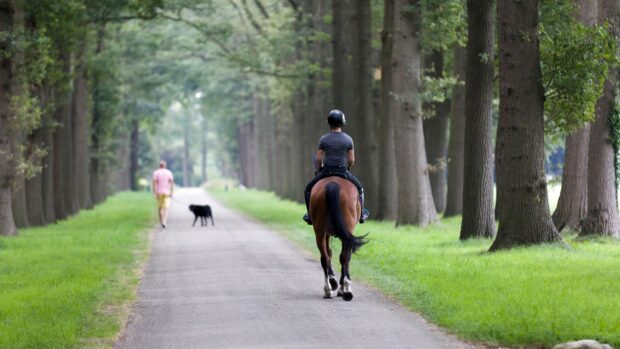THE huge and diverse popularity of riding in Sweden shows the effect of state interest and backing, research has found.
Sports professor Susanna Hedenborg, of Malmö University, investigated the reasons equestrianism in the country is so “classless”, in contrast to the system in some other countries.
Riding is one of the most popular youth sports in Sweden and the national equestrian federation has more than 150,000 members.
“It’s a different concept and way of organising riding,” Prof Hedenborg told H&H.
She explained that the state subsidising of the sport has a long history. Until the end of the 19th century, it was the premise of the military, or upper-class men, but in the 20th century, the government started taking an interest, for military reasons.
“After the end of World War I, there was a strong military focus on horses, riding and breeding,” Prof Hedenborg said. “The horse was still considered important for the army, for example, if Sweden was to go to war.”
When costs grew too high for the Swedish military to keep horses, the government instead supported equestrianism to maintain readiness for battle. The horses were lent to riding schools, where they could be trained and kept fit, and it was seen as important that all children had the chance to learn to ride.
“It was in the interest of the state and politicians to support the riding schools, which did not happen in the same way in other countries,” Prof Hedenborg said. “And even though riding is not a cheap sport, it is more accessible here today than in many other places.”
Prof Hedenborg explained that after World War II, the situation changed. The welfare state grew and people’s leisure time increased, and the government started to invest in youth sport.
“Riding schools became part of that movement, in a way that didn’t happen in many countries,” she said. “It’s still seen as an important part of youth sport. Young people aren’t as active as they were but riding is still one of the 10 biggest sports overall, and I think the second biggest for girls.”
Prof Hedenborg said the Swedish government puts far more money into youth than elite sport, but this has not harmed Sweden on the world stage; they took Olympic showjumping team gold this summer and showjumper Malin Baryard-Johnsson is just one of those who learnt her trade at a state-subsidised stable. She added that children taking part in the subsidised activities may only ride once a week but they might be at the yard every day, learning horse care and generally being part of the industry.
“I think everyone should be able to choose what they want to do in their leisure time, it shouldn’t be your background that dictates,” Prof Hedenborg said.
Andrew Stennett runs I-Pegasus CIC, at Grove House Stables in Nottinghamshire, which tries to give as many people as possible the chance to benefit from riding and access to horses.
“We’re in a crisis of physical activity, sport and wellbeing,” he said. “And if you look at the types of people that [crisis] involves, we’re one of the few sports that can appeal to that demographic. We have to ensure the routes are there so people can access riding, and that’s down to funding and supporting yards to be able to do it.”
The British Horse Society (BHS) developed its new programme Pony Stars with the aim of creating more opportunities for more people to access horses and riding, and it is similar to the timetables mentioned by Prof Hedenborg, with emphasis on unmounted equestrian activity.
BHS head of business support Sarah Dale told H&H: “Pony Stars was developed with everyone in mind. The BHS wants every child to feel included and encouraged to join in with the adventure, regardless of their background, gender or ability. We want riding to be a more inclusive sport and have had great feedback from parents who don’t have much experience with horses as Pony Stars can help introduce people to the equestrian world in an easy, accessible way.”
You might also be interested in:

Olympic team showjumping gold and silver medals settled in dramatic jump-off

‘Rare and unbelievable’: meet the horse who jumped clear in every Olympic showjumping round

5 reasons why a subscription to HorseandHound.co.uk makes the perfect last-minute gift
Horse & Hound magazine, out every Thursday, is packed with all the latest news and reports, as well as interviews, specials, nostalgia, vet and training advice. Find how you can enjoy the magazine delivered to your door every week, plus options to upgrade your subscription to access our online service that brings you breaking news and reports as well as other benefits.




